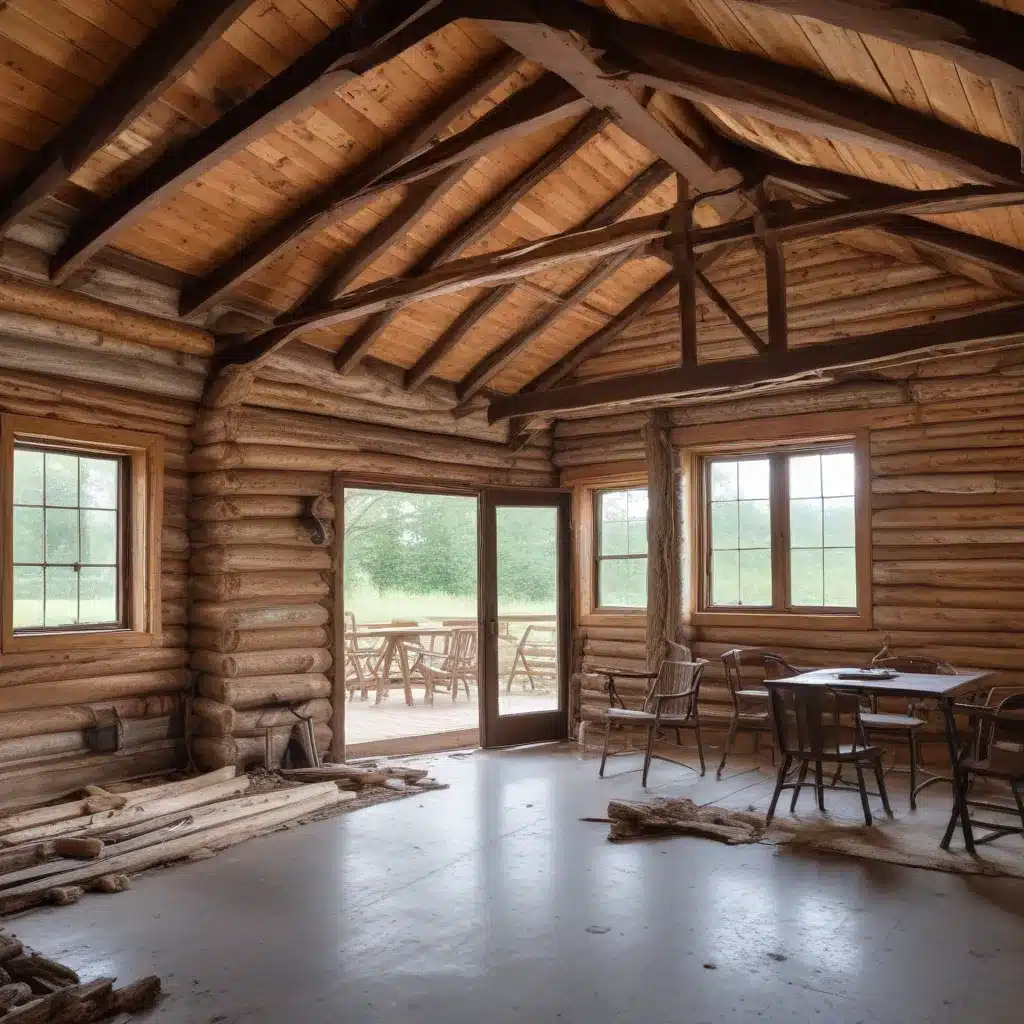
Reviving the Past: Unlocking the Potential of Abandoned Structures
As the demand for sustainable and eco-friendly living solutions continues to grow, the concept of adaptive reuse has become an increasingly popular approach in the world of log home construction. Transforming abandoned structures into beautiful and energy-efficient log homes not only breathes new life into neglected buildings but also offers a unique opportunity to incorporate sustainable materials and cutting-edge building techniques.
In this comprehensive article, we will delve into the world of adaptive reuse, exploring the benefits, techniques, and considerations for those interested in converting abandoned structures into stunning log homes. Whether you’re a homeowner, architect, or contractor, this guide will provide you with the necessary insights to navigate the process of transforming old structures into sustainable, custom-built log homes.
Embracing the Charm of Abandoned Structures
Abandoned structures, such as old barns, factories, or farmhouses, often possess a captivating charm and character that can be seamlessly incorporated into the design of a log home. These structures, with their weathered wood, unique architectural features, and rich history, can serve as a canvas for creating a one-of-a-kind living space that blends the old with the new.
Adaptive reuse projects in the log home industry have gained significant momentum in recent years, as homeowners and builders recognize the value in preserving and repurposing these historic structures. By carefully deconstructing and reconstructing the existing materials, log home builders can create stunning custom homes that honor the past while embracing modern design and energy-efficient technologies.
Sustainable Approach to Log Home Construction
One of the primary advantages of adaptive reuse in log home construction is the inherent sustainability of the process. By repurposing existing materials, log home builders can significantly reduce the environmental impact of new construction, minimizing the need for resource-intensive extraction and manufacturing processes.
Furthermore, many abandoned structures are often constructed using high-quality, durable materials that can be salvaged and incorporated into the new log home design. This not only reduces waste but also contributes to the long-term durability and resilience of the home, as the recycled materials have already stood the test of time.
Customizing the Log Home Experience
Adaptive reuse projects in the log home industry also offer a unique opportunity for homeowners to create truly custom-built living spaces. By working closely with experienced log home builders, homeowners can carefully select the most suitable abandoned structure, whether it’s a historic barn, a dilapidated factory, or a forgotten farmhouse, and transform it into a personalized log home that reflects their individual style and needs.
This customization process extends beyond the exterior design, as log home builders can also integrate energy-efficient technologies, modern amenities, and sustainable building materials to create a comfortable, cost-effective, and environmentally-friendly living environment.
Navigating the Challenges of Adaptive Reuse
While the benefits of adaptive reuse in log home construction are numerous, there are also several challenges that must be addressed. Structural integrity, code compliance, and environmental remediation are just a few of the critical factors that must be carefully considered during the planning and construction phases.
Skilled log home builders who have experience in adaptive reuse projects are essential in navigating these complexities and ensuring the successful transformation of an abandoned structure into a functional, safe, and beautiful log home.
Cost Considerations for Adaptive Reuse Log Homes
The cost of an adaptive reuse log home project can vary significantly, depending on the condition of the existing structure, the extent of the necessary renovations, and the desired level of customization. On average, the cost of converting an abandoned structure into a log home can range from $150 to $300 per square foot, with higher-end projects potentially exceeding $400 per square foot.
It’s important to note that while the initial investment may be higher than new log home construction, the long-term benefits of adaptive reuse, such as reduced environmental impact and increased energy efficiency, can offset the upfront costs. Additionally, homeowners may be eligible for various tax credits and incentives for undertaking sustainable renovation projects, further enhancing the financial viability of an adaptive reuse log home.
Embracing Sustainability through Adaptive Reuse
By embracing the concept of adaptive reuse, log home builders and homeowners can contribute to the development of a more sustainable and eco-friendly built environment. This approach not only reduces waste and resource consumption but also preserves the unique character and historical significance of abandoned structures, creating living spaces that seamlessly blend the old and the new.
As the demand for sustainable living solutions continues to grow, the adaptive reuse of abandoned structures into log homes is set to play an increasingly crucial role in the future of the log home industry. By capitalizing on the inherent charm and durability of these structures, log home builders can offer homeowners the opportunity to create custom-built, energy-efficient, and environmentally-conscious living spaces that celebrate the past while embracing the present.
Conclusion: Unlocking the Potential of Abandoned Structures
Adaptive reuse in log home construction is a transformative approach that breathes new life into abandoned structures, creating beautiful and sustainable living spaces that honor the past while embracing the future. By carefully repurposing existing materials, integrating energy-efficient technologies, and tailoring the design to the unique needs of the homeowner, log home builders can unlock the hidden potential of these neglected structures, transforming them into exceptional and eco-friendly log homes.
As the demand for sustainable living solutions continues to grow, the adaptive reuse of abandoned structures into log homes will undoubtedly play an increasingly vital role in the log home industry. By embracing this innovative approach, homeowners, architects, and contractors can contribute to the development of a more sustainable and environmentally-conscious built environment, while also preserving the rich history and character of these forgotten structures.
To explore more about log home construction and the latest trends in the industry, be sure to visit Jorgensen Log Homes, a leading provider of custom-built log homes, timber frame homes, and related services in the United States.


